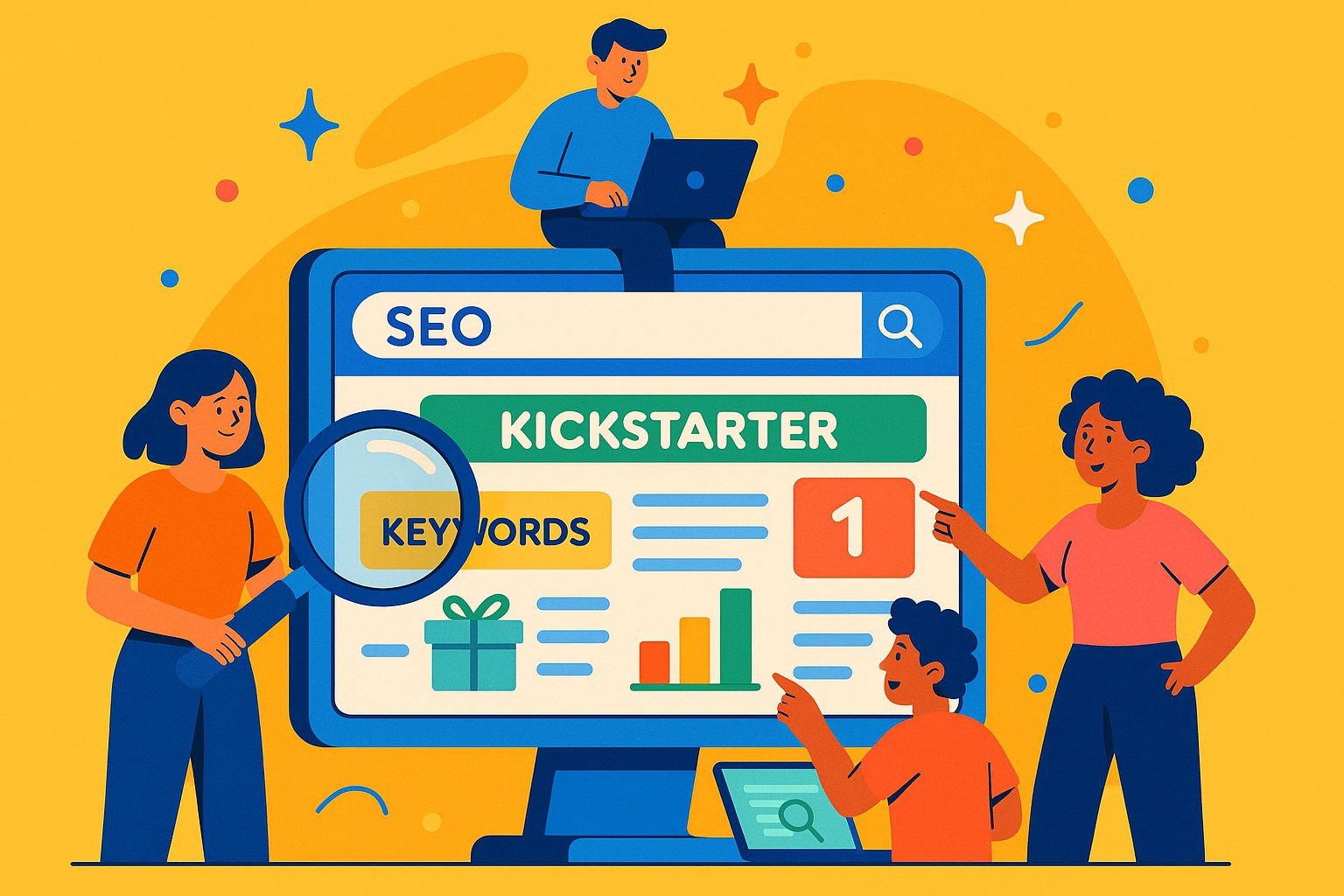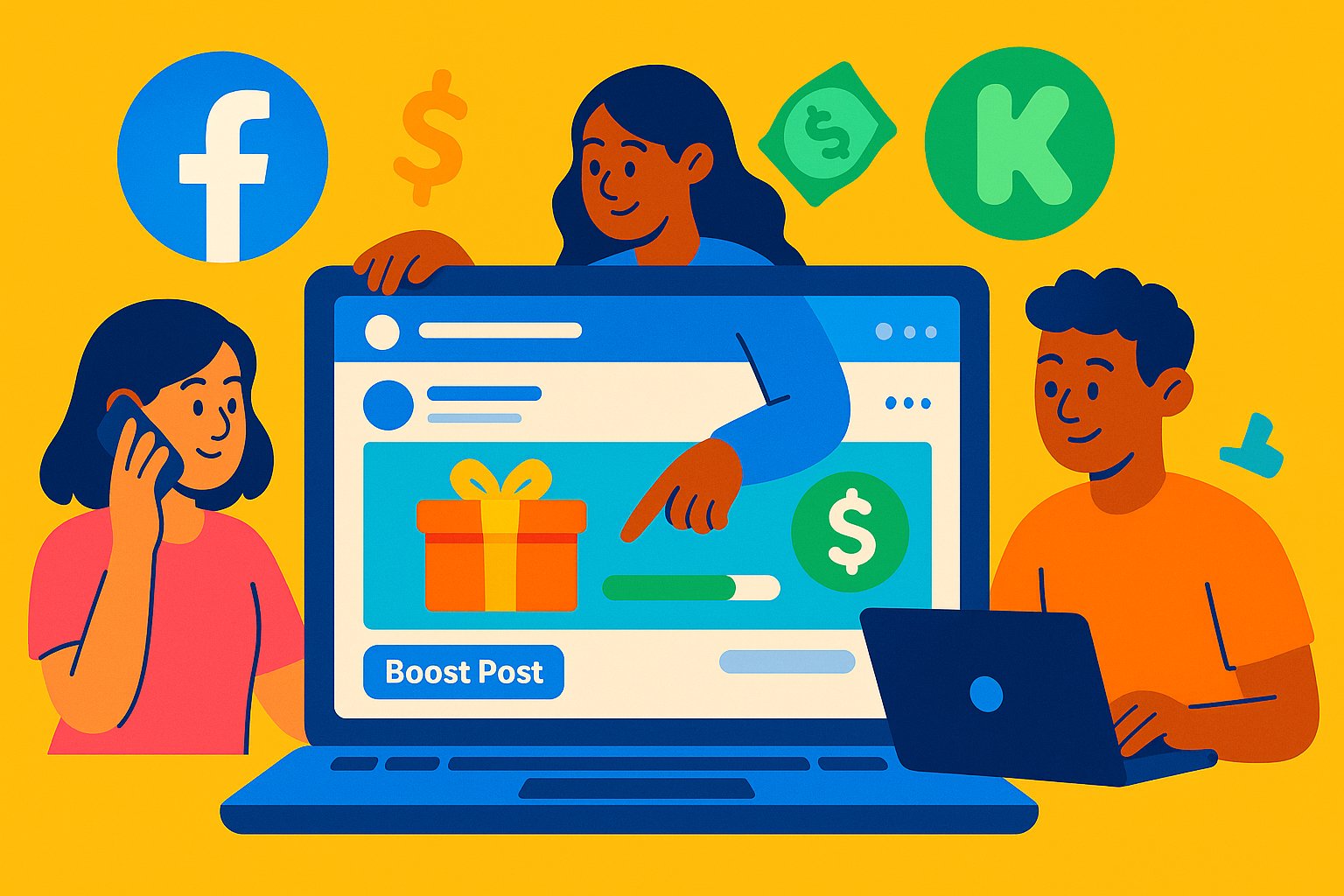Igniting Momentum: The Role of Social Media in Crowdfunding Success
Crowdfunding campaigns thrive on community engagement, and social media has become the modern-day town square where supporters gather, discover, and advocate for projects they believe in. Whether you’re raising funds for a creative endeavor, an innovative product, or a community-driven cause, leveraging social media strategies is essential to amplify your reach and build trust before the campaign even officially launches. In this age of constant connectivity, cultivating a genuine online presence can turn casual observers into passionate backers who feel personally invested in your mission. By weaving together storytelling, targeted outreach, and data-driven refinement, you ensure that your crowdfunding project stands out in a crowded digital landscape. This article explores proven social media tactics designed to boost your crowdfunding efforts and maximize contributions from day one.
Defining Your Campaign Persona: Crafting a Consistent Brand Voice
Before you begin posting, it’s crucial to establish a clear campaign persona that resonates with your target audience. Your brand voice—whether playful and irreverent, earnest and heartfelt, or expert and authoritative—serves as the foundation for all your social media content. Consistency across platforms reinforces recognition: using the same profile image, color palette, and messaging style on Facebook, Instagram, Twitter, and LinkedIn ensures that potential backers immediately connect the dots. Introduce your team, share personal anecdotes about why this project matters, and highlight the problem you aim to solve. This authenticity invites followers to become more than spectators; they begin to see themselves as stakeholders in your journey. By defining a persona that aligns with your campaign’s values and objectives, you foster trust and set the stage for sustained engagement.
Weaving a Compelling Narrative: Building Anticipation Pre-Launch
Stories have a unique power to create emotional bonds. Weave a narrative arc that guides your audience from the spark of an idea to the vision of its realization. Begin by teasing the concept: share a sketch of your prototype, post a behind-the-scenes photo of your creative process, or drop a short video hinting at a game-changing feature. As you progress toward launch, reveal more details—introduce collaborators, showcase milestones achieved, or explain the impact your project will have on real people. Maintain a cadence of storytelling updates: perhaps a weekly blog-style post on LinkedIn, daily Instagram Stories with quick progress snippets, and occasional Twitter threads that dive deeper into technical aspects. Each narrative installment should feel like a chapter in a larger tale, inviting followers to anticipate the next reveal. This incremental build-up primes your audience to respond enthusiastically when your crowdfunding campaign officially goes live.
Engaging Your Community: Interactive Conversations and Live Events
A static feed only goes so far. To truly galvanize support, embrace interactive tactics that transform passive scrolling into active engagement. Harness the power of polls on Instagram Stories or Twitter to ask your followers which project features excite them most. Host live Q&A sessions on Facebook or Instagram Live to address questions, clarify uncertainties, and demonstrate your commitment to transparency. When backers sense that their opinions matter, they become more likely to spread the word. Organize short-form challenges—such as a hashtag-driven photo contest showing supporters’ own creative work—that tie back to your campaign’s theme. Encourage user comments by asking open-ended questions in your captions: “What would inspire you to support a mission-driven film?” Repost user-generated content to showcase your community’s enthusiasm and creativity. By creating opportunities for two-way dialogue, you deepen connections and foster a sense of belonging that compels supporters to rally behind your crowdfunding goals.
Amplifying Reach with Influencer and Ambassador Collaborations
Influencers, micro-influencers, and brand ambassadors can serve as powerful conduits to niche communities that might otherwise remain out of reach. Identify individuals whose values align with your project and whose followers match your target demographics. A micro-influencer with 10,000 highly engaged fans may generate more authentic buzz than a celebrity with millions of passive followers. Approach prospective collaborators with a clear value proposition: perhaps early access to your product, exclusive campaign updates, or even a limited-edition perk for their audience. Encourage influencers to share their honest impressions—unfiltered testimonials that carry weight with their followers. Service-based campaigns, such as educational workshops or community initiatives, can benefit greatly from this approach. When an influencer’s audience sees genuine enthusiasm from someone they trust, they’re more inclined to explore your campaign, subscribe to updates, and ultimately click the “Back This Project” button. Layer these collaborations within your broader content calendar to maintain a steady stream of third-party endorsements leading up to and during your crowdfunding drive.
Mastering Timing: Developing a Strategic Posting Calendar
Irregular posting can leave your audience feeling disconnected or uninformed about your progress. Instead, develop a comprehensive content calendar that aligns with key campaign milestones. About four to six weeks before launch, roll out introductory posts across all social channels to build awareness. Two to three weeks before launch, increase frequency with teaser videos, behind-the-scenes photos, and progress reports. The week leading into your crowdfunding launch should feel electric: daily countdown posts, sneak peeks of reward tiers, and personalized shout-outs for early subscribers. Scheduling tools like Hootsuite, Buffer, and Later can help you batch content in advance, ensuring consistency even when your team is busy with final preparations. Monitor engagement metrics—likes, comments, shares, and direct messages—to identify peak interaction times and adjust posting schedules accordingly. By anticipating your audience’s online behavior and maintaining a reliable rhythm of updates, you transform sporadic interest into sustained anticipation and prime your followers to convert when your campaign goes live.
Content Variety: Balancing Stories, Videos, and Visuals
Diverse content formats keep your audience engaged and cater to different consumption preferences. While written posts on Facebook or LinkedIn allow for in-depth storytelling, video content—be it short-form Reels, TikTok snippets, or longer YouTube teasers—captures attention in an instant. A 15-second demo of your prototype in action can convey more excitement than a paragraph of text. Similarly, eye-catching visuals, such as custom graphics that illustrate your campaign’s core value proposition, break up long blocks of copy and provide quick highlights for casual scrollers. Consider alternating between personal vlogs, project milestone infographics, and user-generated testimonials to maintain freshness. For campaigns with complex technical aspects, create educational explainer videos that distill jargon into clear, engaging narratives. This multifaceted approach not only broadens your reach across platform algorithms—since each channel favors different formats—but also keeps existing followers from growing fatigued by repetitive content. When your content mix feels dynamic, you continually offer new entry points for potential backers to become invested in your vision.
Harnessing Paid Advertising: Precision Targeting for Maximum Impact
Organic reach can only take you so far. Integrating paid social advertising into your strategy allows you to zero in on highly specific audiences most likely to back your project. Begin by setting a modest budget to test various ad creative—different headlines, images, and target demographics—using small A/B tests. Facebook and Instagram’s Ads Manager enables you to define granular criteria: age, location, interests, and even behaviors like frequent online shoppers. By analyzing which ad sets drive the highest click-through rates and pre-launch sign-ups, you can reallocate budget toward the most cost-effective creatives. For a sustainable approach, consider retargeting ads to website visitors who didn’t subscribe initially, offering them an incentive like early-bird discount codes. LinkedIn ads can be especially effective for B2B-focused campaigns or projects seeking professional endorsements. Even a modest ad spend, when optimized by data and targeted strategically, can yield significant boosts in campaign visibility and backer acquisition.
Cultivating User-Generated Content: Turning Supporters into Storytellers
Few social proofs are more persuasive than authentic, user-generated content. Encourage early backers to share their reasons for supporting your project—whether through short video testimonials, creative unboxing posts, or photos of themselves using a prototype. Launch a hashtag challenge where supporters post images or stories related to your campaign’s theme, then regularly feature the best submissions on your own channels. This not only magnifies reach by tapping into each participant’s network, but also builds a community-driven narrative that feels genuine and grassroots. When potential backers see real people excitedly sharing their involvement, it humanizes your project and reduces uncertainty. To further incentivize participation, offer small rewards—exclusive digital badges, early access to campaign updates, or spotlights on your campaign page—for those who create high-quality content. Over time, this organic buzz forms a self-sustaining loop where each new piece of user-generated content becomes a persuasive testimonial that fuels further contributions.
Monitoring Metrics: Data-Driven Refinements for Ongoing Optimization
A social media strategy without measurement is like sailing without a compass. Track key performance indicators—reach, engagement rate, click-through rate, and conversion rate—to identify what resonates and what falls flat. If a particular post garners exceptional engagement but doesn’t drive traffic to your campaign page, revisit the call-to-action or link placement. If video content consistently outperforms static images, double down on short-form video production. Use platform analytics—Facebook Insights, Twitter Analytics, Instagram Insights—as well as third-party tools like Sprout Social or Hootsuite Analytics to consolidate data across channels. Monitor referral traffic to your crowdfunding page using UTM parameters, determining which social source delivers the most qualified visitors. Periodically revisit your content calendar, pruning underperforming tactics and amplifying those that spark the most excitement. By embracing a cycle of measurement, iteration, and refinement, you ensure that your social media efforts remain agile, data-driven, and aligned with your campaign’s evolving needs.
Sustaining Momentum Post-Launch: Keeping Backers Engaged
Once your campaign is live, social media tactics shift from anticipation to fulfillment. Use social channels to share real-time fundraising milestones—recognizing major backers publicly, celebrating unlocked stretch goals, and announcing surprise updates. Maintain transparency around production timelines, shipping estimates, and potential delays. If you promised exclusive behind-the-scenes content for certain backer tiers, deliver it promptly and tweet or post about it to showcase the added value of supporting your project. Host regular live streams to answer questions, provide progress reports, and feature guest appearances from collaborators or early influencers. By continuing the same narrative-driven approach you used pre-launch, you sustain excitement and encourage latecomers to join the effort. Moreover, actively thanking backers—tagging them in posts, resharing their testimonials, or offering early previews—reinforces their sense of community ownership, prompting them to become vocal evangelists who advocate for you long after the campaign’s initial run.
Integrating Social and Email: A Unified Communication Ecosystem
While social media drives awareness, email marketing remains a powerful vehicle for deepening connections and prompting conversions. In your pre-launch phase, invite followers to subscribe to an email list for exclusive campaign updates, early-bird discount codes, and insider-only behind-the-scenes glimpses. Use email automation to segment your list based on engagement levels—those who clicked through multiple social posts receive more detailed project updates, while those who only briefly visited your landing page might get a concise video overview. Once your crowdfunding campaign goes live, send targeted emails highlighting upcoming live events, new reward tiers, and limited-time incentives. Embed social media share buttons in your emails to encourage cross-platform engagement, enabling subscribers to easily rally their own networks. By synchronizing social and email efforts, you create a cohesive communication ecosystem where each channel amplifies the other, maximizing the likelihood that casual followers evolve into committed backers.
Collaboration and Partnerships: Expanding Your Campaign’s Network
Strategic partnerships can take your crowdfunding reach beyond what you could achieve solo. Identify complementary brands, non-profits, or online communities whose missions align with yours. For instance, if you’re launching an eco-friendly product, partner with environmental organizations that can share your campaign with their followers. Co-host joint webinars, Instagram takeovers, or Twitter Spaces events that spotlight how your project aligns with shared values. Invite guest contributors—bloggers, podcasters, or YouTube creators—to interview your team and feature your campaign as a case study. These collaborations not only introduce your project to new audiences, but also lend external credibility, reinforcing your trustworthiness in the eyes of potential backers. Make sure to formalize these partnerships with mutually beneficial terms—cross-promotion commitments, shared content calendars, or joint influencer outreach—so that each partner is invested in the campaign’s success.
Crafting a Post-Campaign Advocacy Strategy: Transforming Backers into Brand Ambassadors
The conclusion of your crowdfunding drive should mark the beginning of a long-term relationship with your backers. Use social media to provide regular updates on product development, shipping milestones, and future enhancements. Encourage supporters to share their unboxing experiences, product reviews, and creative applications. Consider launching a referral program that rewards backers for bringing new customers or early adopters, further extending your network through word-of-mouth. Host exclusive social media groups or forums—either public or private—where backers can connect, share feedback, and propose new ideas. By maintaining open lines of communication, you ensure that early supporters feel valued, fostering a tribe of brand ambassadors who continue to advocate for your project beyond the initial crowdfunding window. This ongoing engagement not only strengthens your community but also sets the stage for future product launches, expansions, or follow-on campaigns.
Building a Sustainable Crowdfunding Community Through Social Media
In an era where attention spans are fleeting and competition for funding is fierce, social media strategies can be the lifeline that propels your crowdfunding campaign to success. From defining a consistent brand voice and weaving captivating narratives to harnessing influencer collaborations and monitoring analytics, each tactic contributes to a cohesive plan that amplifies reach and engagement. By crafting a robust posting calendar, weaving in varied content formats, and executing targeted paid ads, you ensure that your project message cuts through the noise. Equally important is fostering genuine two-way communication—answering follower questions, celebrating milestones, and showcasing user-generated content to cultivate a sense of shared ownership. As you transition from pre-launch to live fundraising and beyond, treating social media as a dynamic, evolving ecosystem enables you to build a sustainable community of passionate backers. Ultimately, the success of your crowdfunding venture rests not just on a single campaign, but on the enduring relationships you forge through consistent, authentic social media engagement.




